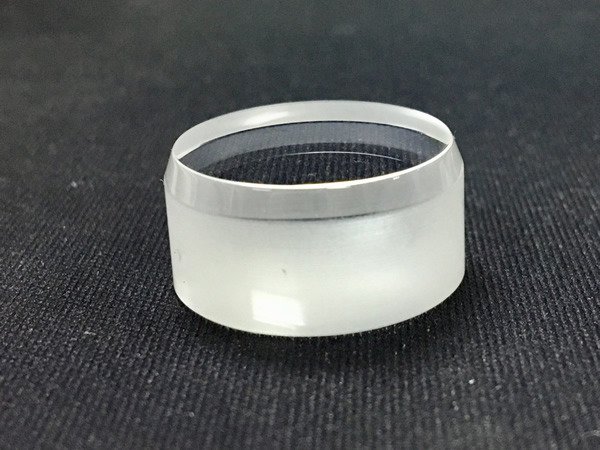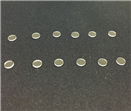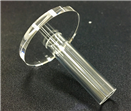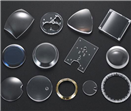

Time:2025-06-19
Sapphire glass, as an optical material, plays an important role in the field of optical lenses due to its physical and optical properties. This article will explore the effect of the high transmittance and controllable surface structure design of sapphire glass on optical lenses, analyze how these characteristics affect the performance of lenses, and their applications in modern technology.
Firstly, the high transmittance of sapphire glass is an important foundation for its widespread application in optical lenses. Sapphire, also known as aluminum gemstone (Al ? O ∝), is a material with high hardness, with a Mohs hardness of up to 9. This high hardness not only endows it with high wear resistance and scratch resistance, but also provides it with high transparency. In the ultraviolet, infrared, and visible light bands, it exhibits good transmittance and can meet the requirements of multi-mode composite guidance. This characteristic makes sapphire glass an ideal material for manufacturing high-precision optical lenses, especially in applications that require high transmittance and low loss.

The high transmittance is mainly due to its unique crystal structure and chemical composition. Sapphire is a wide bandgap semiconductor material with low absorption coefficient and scattering loss, which can efficiently transmit optical signals. In addition, the transmittance is also affected by its surface quality and structural design. Through precise polishing and coating processes, the transparency performance can be further optimized, reducing the reflection and scattering of light on the surface, and improving the imaging quality of the lens.
However, relying solely on high transmittance is not enough to meet all the needs of modern optical lenses. In practical applications, optical lenses also need to have good anti reflection, anti pollution, and anti scratch properties. The implementation of these properties cannot be achieved without the controllable surface structure design of sapphire glass.
Controllable surface structure design refers to the micro nano processing of the surface of sapphire glass through specific technological means, forming microstructures with specific shapes, sizes, and arrangements. These microstructures can alter the propagation path of light on the surface, thereby achieving effective control over light reflection, scattering, and absorption.
In optical lenses, the high transmittance and controllable surface structure design of sapphire glass work together to improve the imaging performance of the lens. High transmittance ensures efficient utilization of light during transmission, reducing energy loss and noise interference. The controllable surface structure design optimizes the propagation path of light on the lens surface, improving the anti reflection, anti pollution, and anti scratch performance of the lens. The combined effect of these characteristics makes sapphire glass an ideal material for manufacturing high-precision and high-performance optical lenses.
Sapphire glass plays an important role in optical lenses due to its high transmittance and controllable surface structure design. These characteristics make sapphire glass an ideal material for manufacturing high-precision and high-performance optical lenses, improving the imaging quality and user experience of products.






Tel
Mobile phone
Customer service
TOP